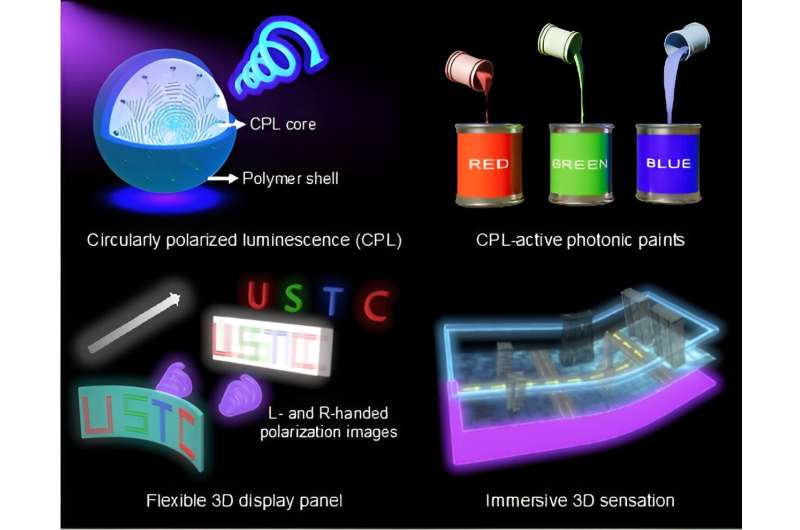
Flexible three-dimensional (3D) displays drive innovation in the next-generation display technology, as they allow for the creation of versatile and adaptable displays that can be easily manipulated and customized to fit various viewing scenarios.
Printing circularly polarized luminescence (CPL, generated by the intrinsic chirality of luminescent materials) materials on moving, deformable and free-form surfaces serves to fabricate large-scale and high-performance integral imaging 3D displays. CPL provides a helping hand using its unusual optical rotation characteristics to achieve considerable contrast ratio and wide viewing angle.
Scientists led by Professor Taotao Zhuang and Professor Shu-Hong Yu at the University of Science and Technology of China have made progress in the field of processable circularly polarized luminescence materials, enabling flexible 3D imaging.
The research, titled “Processable circularly polarized luminescence material enables flexible stereoscopic 3D imaging” and published in the journal Science Advances, opens up new possibilities for novel CPL-active materials in advances of both performance and processability with related applications.
The authors reported a category of CPL-active photonic paints (CPL-PPs) based on chiral liquid crystals, which realized the large-scale production of printable CPL-active materials. These paints exhibited intense CPL emission, providing the desired performance for practice.
Moreover, it was able to directly write customized graphics on a range of substrates such as polypropylene, cotton fabric, and polyester fabric using CPL-PPs, and exhibited meter-long luminous coatings with strong circularly polarized characteristics.
By printing CPL-PPs as pixel arrays on flexible substrates, the researchers created flexible 3D display panels featuring two sets of full-color pixel arrays based on orthogonal CPL emission. This approach enables the creation of immersive 3D images via presenting distinct images with orthogonal circular polarization states to the left and right eyes.
The researchers further envisioned the integration of these flexible 3D display panels into wearable devices, such as smartwatches. This advancement is expected to have a profound impact on various applications, including virtual reality, medical imaging, scientific visualization, and more.
Experts in the field appreciated that this progress has the potential to reshape multiple industries and transform how humans perceive and interact with visual information. The advent of printable CPL-active materials will significantly broaden the applications of CPL-optic-achievable materials in various fields, including information security, spintronics, quantum computing, biological detection, and more.
More information:
Mingjiang Zhang et al, Processable circularly polarized luminescence material enables flexible stereoscopic 3D imaging, Science Advances (2023). DOI: 10.1126/sciadv.adi9944. www.science.org/doi/10.1126/sciadv.adi9944
Provided by
University of Science and Technology of China
Citation:
Printable circularly polarized luminescence materials enable flexible, stereoscopic displaying (2023, October 25)
retrieved 26 October 2023
from https://phys.org/news/2023-10-printable-circularly-polarized-luminescence-materials.html
This document is subject to copyright. Apart from any fair dealing for the purpose of private study or research, no
part may be reproduced without the written permission. The content is provided for information purposes only.

